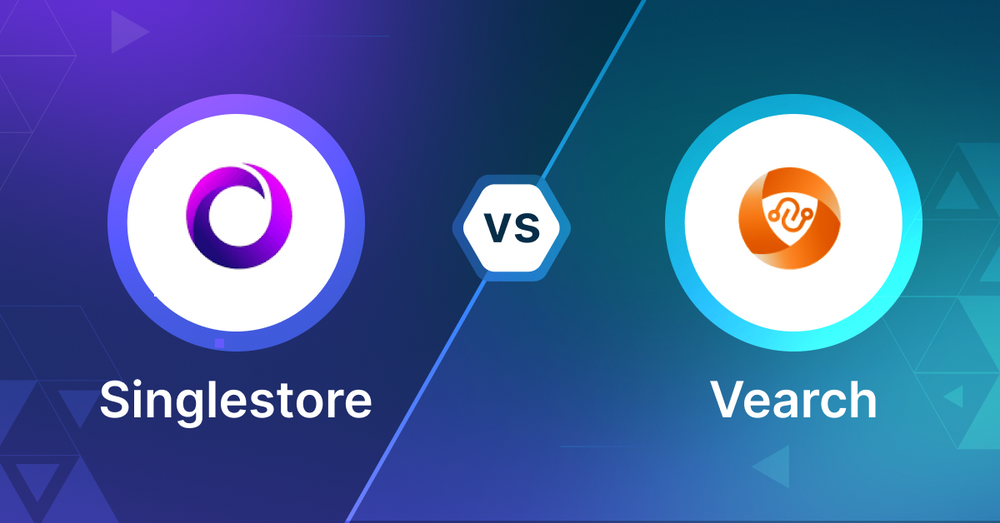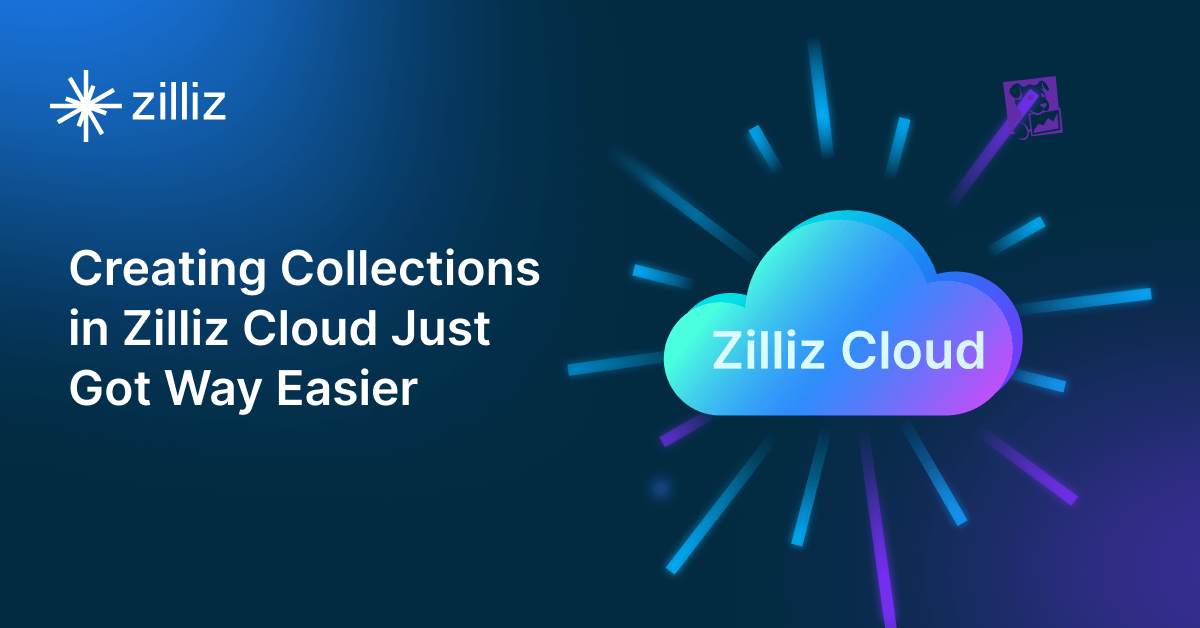SingleStore vs Vearch Choosing the Right Vector Database for Your AI Apps

What is a Vector Database?
Before we compare SingleStore and Vearch, let's first explore the concept of vector databases.
A vector database is specifically designed to store and query high-dimensional vectors, which are numerical representations of unstructured data. These vectors encode complex information, such as the semantic meaning of text, the visual features of images, or product attributes. By enabling efficient similarity searches, vector databases play a pivotal role in AI applications, allowing for more advanced data analysis and retrieval.
Common use cases for vector databases include e-commerce product recommendations, content discovery platforms, anomaly detection in cybersecurity, medical image analysis, and natural language processing (NLP) tasks. They also play a crucial role in Retrieval Augmented Generation (RAG), a technique that enhances the performance of large language models (LLMs) by providing external knowledge to reduce issues like AI hallucinations.
There are many types of vector databases available in the market, including:
- Purpose-built vector databases such as Milvus, Zilliz Cloud (fully managed Milvus)
- Vector search libraries such as Faiss and Annoy.
- Lightweight vector databases such as Chroma and Milvus Lite.
- Traditional databases with vector search add-ons capable of performing small-scale vector searches.
SingleStore is a distributed, relational, SQL database management system with vector search as an add-on and Vearch is a purpose-built vector database. This post compares their vector search capabilities.
SingleStore: Overview and Core Technology
SingleStore has made vector search possible by putting it in the database itself, so you don’t need separate vector databases in your tech stack. Vectors can be stored in regular database tables and searched with standard SQL queries. For example, you can search similar product images while filtering by price range or explore document embeddings while limiting results to specific departments. The system supports both semantic search using FLAT, IVF_FLAT, IVF_PQ, IVF_PQFS, HNSW_FLAT, and HNSW_PQ for vector index and dot product and Euclidean distance for similarity matching. This is super useful for applications like recommendation systems, image recognition and AI chatbots where similarity matching is fast.
At its core SingleStore is built for performance and scale. The database distributes the data across multiple nodes so you can handle large scale vector data operations. As your data grows you can just add more nodes and you’re good to go. The query processor can combine vector search with SQL operations so you don’t need to make multiple separate queries. Unlike vector only databases SingleStore gives you these capabilities as part of a full database so you can build AI features without managing multiple systems or dealing with complex data transfers.
For vector indexing SingleStore has two options. The first is exact k-nearest neighbors (kNN) search which finds the exact set of k nearest neighbors for a query vector. But for very large datasets or high concurrency SingleStore also supports Approximate Nearest Neighbor (ANN) search using vector indexing. ANN search can find k near neighbors much faster than exact kNN search sometimes by orders of magnitude. There’s a trade off between speed and accuracy - ANN is faster but may not return the exact set of k nearest neighbors. For applications with billions of vectors that need interactive response times and don’t need absolute precision ANN search is the way to go.
The technical implementation of vector indices in SingleStore has specific requirements. These indices can only be created on columnstore tables and must be created on a single column that stores the vector data. The system currently supports Vector Type(dimensions[, F32]) format, F32 is the only supported element type. This structured approach makes SingleStore great for applications like semantic search using vectors from large language models, retrieval-augmented generation (RAG) for focused text generation and image matching based on vector embeddings. By combining these with traditional database features SingleStore allows developers to build complex AI applications using SQL syntax while maintaining performance and scale.
What is Vearch? Overview and Core Technology
Vearch is a tool for developers building AI applications that need fast and efficient similarity searches. It’s like a supercharged database, but instead of storing regular data, it’s built to handle those tricky vector embeddings that power a lot of modern AI tech.
One of the coolest things about Vearch is its hybrid search. You can search by vectors (think finding similar images or text) and also filter by regular data like numbers or text. So you can do complex searches like “find products like this one, but only in the electronics category and under $500”. It’s fast too - we’re talking searching on a corpus of millions of vectors in milliseconds.
Vearch is designed to grow with your needs. It uses a cluster setup, like a team of computers working together. You have different types of nodes (master, router and partition server) that handle different jobs, from managing metadata to storing and computing data. This allows Vearch to scale out and be reliable as your data grows. You can add more machines to handle more data or traffic without breaking a sweat.
For developers, Vearch has some nice features that make life easier. You can add data to your index in real-time so your search results are always up-to-date. It supports multiple vector fields in a single document which is handy for complex data. There’s also a Python SDK for quick development and testing. Vearch is flexible with indexing methods (IVFPQ and HNSW) and supports both CPU and GPU versions so you can optimise for your specific hardware and use case. Whether you’re building a recommendation system, similar image search or any AI app that needs fast similarity matching, Vearch gives you the tools to make it happen efficiently.
Key Differences
Search Methodology
SingleStore embeds vector search into its SQL-based database so you can store and query vectors along with your structured data. We support exact k-nearest neighbors (kNN) search for exact results and approximate nearest neighbors (ANN) search for fast performance on large datasets. ANN uses indexing methods like IVF_FLAT and HNSW so it’s great for applications where time is of the essence even if it means sacrificing absolute accuracy. This gives SingleStore the ability to handle a range of search use cases, from precise queries to big ops.
Vearch is designed for vector similarity search and is great for hybrid queries that combine vector matching with structured data filtering. For example it can do complex searches like finding similar products in specific categories or price ranges. It supports IVFPQ and HNSW indexing and CPU and GPU optimizations so you can tune performance to your hardware and use case. Vearch is perfect for ultra fast similarity search on massive datasets.
Data
SingleStore stores and manages vector data in columnstore tables so it’s compatible with structured data. Its structured approach simplifies things but comes with limitations, for example it only supports the Vector Type(dimensions[, F32]) format. This makes SingleStore great for applications where structured and unstructured data coexist but less flexible for those that need different vector formats or configurations.
Vearch is more flexible with data. It can store multiple vector fields in a single document which is useful for managing complex data relationships. And its real-time indexing means search results reflect the latest data updates. This focus on flexibility and real-time makes Vearch a good choice for developers building AI driven systems that rely heavily on unstructured or semi-structured data.
Scalability and Performance
SingleStore scales horizontally by distributing data across multiple nodes. This means you can handle large scale vector operations by just adding more nodes to the cluster. Its query processor also helps with performance by combining vector search and SQL in a single query so you minimize overhead and maximize efficiency for mixed workloads.
Vearch also scales well, it has a cluster architecture where different nodes handle different tasks like metadata management, data storage and routing. This ensures performance as datasets grow. It can process millions of vectors in milliseconds so it can handle heavy workloads. It’s a great choice for applications with heavy vector search workloads.
Flexibility and Customization
SingleStore is all about simplicity and integration, it has a SQL interface so you can combine vector search with traditional database operations. While this simplifies things, it also limits customization. SingleStore is great for scenarios where standard vector operations within a structured database context is enough.
Vearch on the other hand provides a lot of customization options, you can define multiple vector fields and fine tune indexing methods based on your use case. It also supports CPU and GPU, so you can optimize for cost or performance based on your hardware. This flexibility makes Vearch a better choice for projects that require unique configurations or advanced indexing strategies.
Integration and Ecosystem
SingleStore integrates well into enterprise ecosystems especially those built around SQL. It can manage both structured and vector data in one system, so it simplifies architecture and reduces the need for additional tools. This makes SingleStore a good choice for companies that want to consolidate their data operations.
Vearch’s ecosystem is for developers building AI applications. It has a Python SDK for easy development and testing, so you can easily integrate it into your existing projects. While it doesn’t have as many integrations as SingleStore it’s focused on AI and vector centric workflows so it meets the needs of its target audience well.
Ease of Use
SingleStore’s SQL interface is familiar to developers and database administrators who are used to relational databases. Its documentation and design is clear, so the learning curve is minimal and teams can use the vector search capabilities without extensive retraining.
Vearch is developer friendly but may have a steeper learning curve for those not used to vector first systems. But its APIs, real time indexing and Python SDK makes it accessible to developers who are already comfortable with AI and machine learning frameworks. So it’s still a practical tool despite being specialized.
Cost Considerations
SingleStore can combine vector and structured data operations in one system so it can save cost by eliminating the need for separate vector databases. But operational cost may increase as you scale combined SQL and vector workloads especially for high concurrency applications.
Vearch is focused on efficient vector search so it’s a cost effective choice for AI centric use cases. But if you have significant structured data requirements, you may incur additional costs if you need to use additional tools to handle non-vector data. Understanding your data architecture and workload distribution is key to managing costs with either solution.
Security Features
SingleStore has enterprise grade security features like encryption, authentication and access control. So it’s good for applications that require strict compliance and data protection.
Vearch has the essential security features but is more focused on AI and vector search use cases. For applications that handle sensitive data, you may need additional measures to achieve the same level of security as SingleStore. You should evaluate your specific security needs when considering either tool.
When to Choose SingleStore
SingleStore is for companies that need to handle both structured and vector data at scale. SQL interface and vector search integrated into a relational database makes it perfect for use cases like recommendation systems, AI driven analytics and retrieval-augmented generation (RAG). If your application needs to combine vector similarity search with traditional database operations like filtering by price or category SingleStore is the easiest way.
When to Choose Vearch
Vearch is for AI centric applications that need fast and flexible vector similarity search. Complex hybrid queries, real-time indexing and support for multiple vector fields in a single document makes it perfect for recommendation engines, image or text similarity search and other machine learning powered workflows. If you are focused on AI and need a scalable vector, the first system optimized for performance Vearch is the way.
Conclusion
SingleStore and Vearch both have vector search but for different use cases. SingleStore’s strength is in integrating vector search with a traditional relational database so it’s great for applications that have both structured and vector data at scale. Vearch is flexible and focused on AI driven use cases with features for developers building advanced machine learning applications. The choice ultimately depends on your use case, the type of data you have and your performance requirements. Knowing these will guide you to the right technology for you.
Read this to get an overview of SingleStore and Vearch but to evaluate these you need to evaluate based on your use case. One tool that can help with that is VectorDBBench, an open-source benchmarking tool for vector database comparison. In the end, thorough benchmarking with your own datasets and query patterns will be key to making a decision between these two powerful but different approaches to vector search in distributed database systems.
Using Open-source VectorDBBench to Evaluate and Compare Vector Databases on Your Own
VectorDBBench is an open-source benchmarking tool for users who need high-performance data storage and retrieval systems, especially vector databases. This tool allows users to test and compare different vector database systems like Milvus and Zilliz Cloud (the managed Milvus) using their own datasets and find the one that fits their use cases. With VectorDBBench, users can make decisions based on actual vector database performance rather than marketing claims or hearsay.
VectorDBBench is written in Python and licensed under the MIT open-source license, meaning anyone can freely use, modify, and distribute it. The tool is actively maintained by a community of developers committed to improving its features and performance.
Download VectorDBBench from its GitHub repository to reproduce our benchmark results or obtain performance results on your own datasets.
Take a quick look at the performance of mainstream vector databases on the VectorDBBench Leaderboard.
Read the following blogs to learn more about vector database evaluation.
Further Resources about VectorDB, GenAI, and ML
- What is a Vector Database?
- SingleStore: Overview and Core Technology
- What is Vearch**? Overview and Core Technology**
- Key Differences
- When to Choose SingleStore
- When to Choose Vearch
- Conclusion
- Using Open-source VectorDBBench to Evaluate and Compare Vector Databases on Your Own
- Further Resources about VectorDB, GenAI, and ML
Content
Start Free, Scale Easily
Try the fully-managed vector database built for your GenAI applications.
Try Zilliz Cloud for FreeKeep Reading

Zilliz Cloud Now Available in Azure North Europe: Bringing AI-Powered Vector Search Closer to European Customers
The addition of the Azure North Europe (Ireland) region further expands our global footprint to better serve our European customers.

Data Deduplication at Trillion Scale: How to Solve the Biggest Bottleneck of LLM Training
Explore how MinHash LSH and Milvus handle data deduplication at the trillion-scale level, solving key bottlenecks in LLM training for improved AI model performance.

Creating Collections in Zilliz Cloud Just Got Way Easier
We've enhanced the entire collection creation experience to bring advanced capabilities directly into the interface, making it faster and easier to build production-ready schemas without switching tools.
The Definitive Guide to Choosing a Vector Database
Overwhelmed by all the options? Learn key features to look for & how to evaluate with your own data. Choose with confidence.